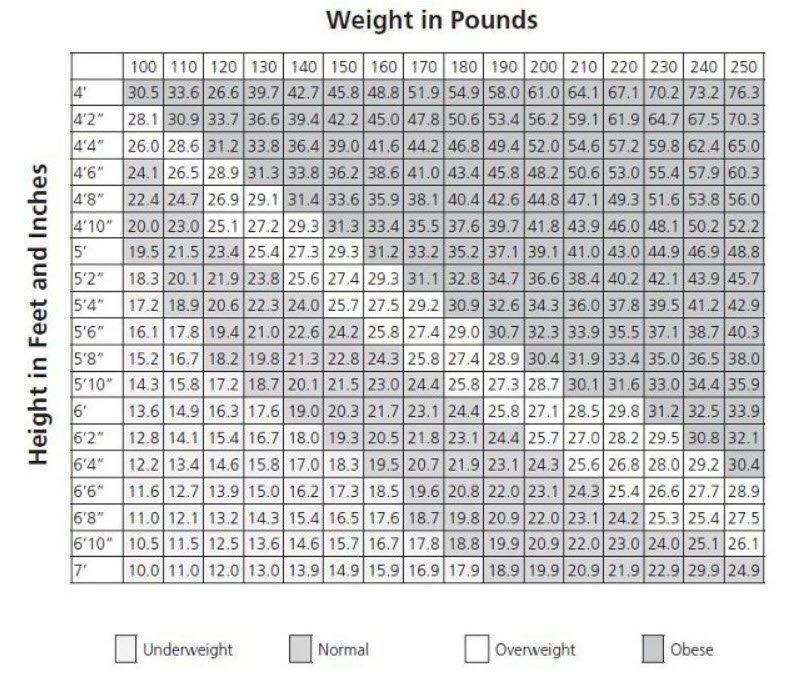
Body Mass Index (BMI) is a widely used tool to assess an individual’s overall health and to determine whether they fall into a healthy weight range. It is a simple and quick calculation that takes into account a person’s weight in relation to their height. In this article, we will delve into what BMI is, how it is calculated, its significance, and its limitations.
What is BMI?
BMI is a numerical value that is used to categorize individuals into different weight categories based on their weight and height. It provides a rough estimate of body fat and helps in identifying whether a person is underweight, has a normal weight, is overweight, or falls into the various degrees of obesity. It is a useful screening tool for health professionals to assess the risk of weight-related health issues.
How is BMI Calculated?
BMI is calculated using the following formula:
BMI = (Weight in kilograms) / (Height in meters squared)
To calculate your BMI, follow these steps:
- Measure your weight in kilograms.
- Measure your height in meters.
- Square your height in meters (multiply your height by itself).
- Divide your weight by the squared height.
For example, if you weigh 70 kilograms and your height is 1.75 meters:
BMI = 70 / (1.75 * 1.75) = 22.86
Your BMI would be approximately 22.86.
Interpreting BMI Categories
BMI values can be categorized into the following groups:
- Underweight: BMI less than 18.5
- Normal Weight: BMI between 18.5 and 24.9
- Overweight: BMI between 25 and 29.9
- Obesity (Class 1): BMI between 30 and 34.9
- Obesity (Class 2): BMI between 35 and 39.9
- Extreme Obesity (Class 3): BMI 40 or greater

Significance of BMI
BMI serves several purposes:
1. Health Assessment: It provides a quick assessment of a person’s weight and potential health risks associated with it. People with a BMI outside the normal range may be at greater risk of various health conditions, such as heart disease, diabetes, and certain cancers.
2. Treatment Planning: BMI can help healthcare professionals plan appropriate treatments and interventions for patients. For instance, individuals in the obese or overweight category may be advised to lose weight for their overall health.
3. Research and Public Health: BMI data is used for large-scale research and public health efforts to monitor trends in obesity and related health issues. It helps policymakers make informed decisions regarding health programs and initiatives.
Limitations of BMI
While BMI is a valuable tool, it has its limitations, and it should not be the sole determinant of a person’s health. Here are some of the limitations:
1. Doesn’t Account for Muscle Mass: BMI does not differentiate between muscle and fat. Athletes with high muscle mass may have a higher BMI, even though they are not overweight or obese.
2. Ignores Body Composition: It does not consider factors like bone density, age, gender, or distribution of fat in the body. These factors can affect health risks.
3. One-Size-Fits-All Approach: The same BMI categories are applied universally, which may not be suitable for all populations or individuals.
4. Not a Diagnostic Tool: BMI is a screening tool, not a diagnostic tool. It provides an initial assessment, but a comprehensive evaluation of an individual’s health requires additional measurements and medical assessment.
Conclusion
Body Mass Index (BMI) is a valuable tool for assessing weight-related health risks, and it has been widely used for decades. However, it is essential to recognize its limitations and not rely solely on it for health assessments.
A holistic approach that includes other measurements, medical history, and consultation with healthcare professionals provides a more accurate picture of an individual’s overall health. Understanding your BMI and its implications can be a useful step in taking charge of your well-being, but it should be part of a broader health management strategy.
You may also like:- Can You Take Calcium and Vitamin D Supplements Together? Read Here
- Taking Control Of Your Hormonal Health: What To Expect From An HRT Clinic
- Strategies for Making Physical Activities Accessible for Children with Special Needs
- ICMR’s Advisory on Tea and Coffee Consumption
- 10 Healthy Tips for World Health Day 2024
- Headache Danger Signals – A Comprehensive Guide
- Commonly Used Drug Dosages for Pain
- Key Responsibilities and Duties of a Doctor
- Personalized Support For Every Family: The Specialized Training Of Lactation Consultants
- Why Does A Person Sleepwalk At Night?








